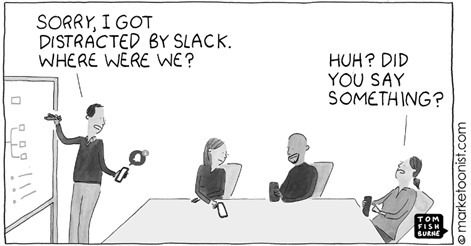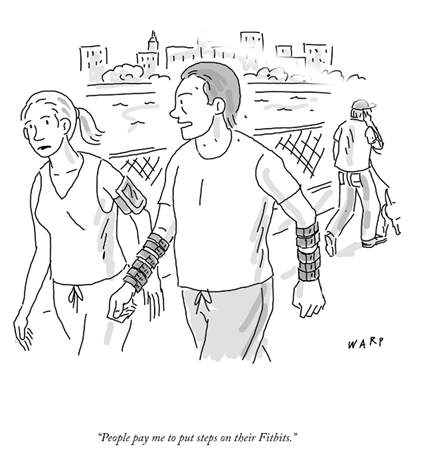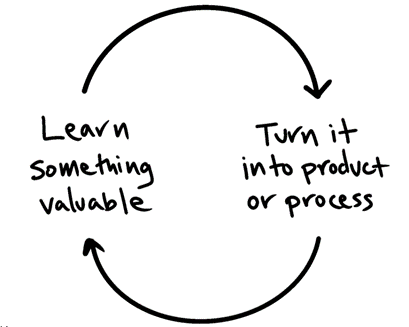The last 3 years have surfaced new challenges and exposed the brokenness of our existing risk and resilience practices. As leaders who lean towards optimism, we view these as opportunities to build back better.
From San Francisco to Sydney, boards, executives, resilience leaders, and the teams they serve have been finding ways to build new agility. Many of the creative workarounds that have emerged are more than Band-Aid solutions; they are postcards from the future. Hidden within these adaptations are clues to how resilience might evolve.
In November, iluminr facilitated a roundtable at BCI World Hybrid 2022 on the accelerating pace of change, using this moment to radically reimagine what we need resilience to be, including real-life examples from enterprise teams paving the path. Below we summarize the 5 key takeaways and learnings from that session and what teams can do to make resilience engagement actionable at their organization.
1. Engagement is no longer an afterthought

Do you feel as though there is more to focus on but less time to focus on it?
You’re not alone. With the availability of information increasing at an accelerating rate, research* indicates we take in a wider array of information on a regular basis.
Compounding matters, our intrinsic bias for newness prompts us to switch context frequently.
With attention more or less a finite resource, teams are rapidly made aware of information but lose interest more quickly. Communicating insights you need teams to respond to in an engaging and novel way makes information easier to digest, simpler to respond to, and signals what is material to pay attention to, driving efficient and effective decision-making.
*Nature Communications, “Accelerating dynamics of collective attention”, April 2019
2. Tabletop anytime, anywhere

Harvard Business Review, “ Where Companies Go Wrong with Learning and Development”, October 2019
In the late 1900s, German psychologist Hermann Ebbinghaus’ documented “The Forgetting Curve.” He found that if new information isn’t applied, we’ll forget about 75% of it after just 6 days.
Further, today’s fast-moving environment means teams must adapt to changing circumstances rapidly by assimilating new information and iterating response. Learning must be continuous and iterative as needs change and the situation evolves.
How do teams adapt their crisis training strategies in a modern hybrid, changing, and the attention-poor world? Shorter, more personalized sessions focused on:
- Emphasizing core principles in a familiar setting
- Applying concepts to immediate, real-world challenges and opportunities
- Giving immediate feedback and coaching
- Providing frequent opportunities to practice in same and novel situations
3. The whole-company resilience fitness challenge

McKinsey, “Resilience: The Whole-Company Fitness Challenge”, October 2021
So if I make things engaging and accessible, I’m set, right? Eh, not exactly.
Your resilience initiative must cut across the various siloes and matrixes of your organization, encouraging teams to think and act collaboratively.
McKinsey highlights the importance of cross-functional resilience strategies in their article “Resilience: The Whole-Company Fitness Challenge”:
“We have found that adopting a holistic, cross-functional approach can improve a company’s overall resilience 30 to 40 percent more than traditional functional optimization does.”
According to Harvard Business Review’s study of 2,000 NCAA coaches*, teams adopting collaborative as well as individual resilience-building strategies are more likely to:
- Believe they can effectively complete tasks together.
- Share a common mental model of teamwork.
- Improvise and develop new ideas or ways of handling adversity.
- Take risks when necessary, such as offering unusual or creative ideas without fear of being criticized.
Resilient teams not only respond to complex and layered events more effectively on their own, but they also know how to respond collectively with more confidence and agility.
Harvard Business Review, “The 4 Things Resilient Teams Do”, July 2019
4. Ingenuity as core competency

We know Resilience is good for business, but we don’t always intuitively make the connection between the resilience practices of sensing, analyzing, and adapting with innovation.
BetterUp‘s research on the value of organizational resilience found that the most resilient employees have almost 20% higher cognitive flexibility and a more robust growth mindset compared to their peers. Further, the most resilient workers were also the most innovative ones, scoring 22% higher on innovative practices such as finding new uses for existing products and processes.
As organizations seek to innovate to emerge as market leaders in uncertainty, the fundamentals of resilience can mean more than helping your team emerge unscathed from tumultuous events. The muscle memory of risk-awareness and resilience drive creativity and better outcomes for your customers.

BetterUp, “Resilience in an Age of Uncertainty”, August 2020
In fact, ultimate goal of building a more risk-aware and resilient organization is instilling the culture of resiliency into everything the business does. When approached in a more integrated way, your business moves from practicing for the sake of practice to realizing immediate impact on the human machinery that makes your business run.
To blend the habits of Resilience into business practice and spark ingenuity, ask your team to bring real-world examples to apply what’s learned in real-time, accelerate adaptation, practice agility, and deliver more value.
5. WIIFM (What’s in it for me?)

A significant 30% of our roundtable participants reported their business stakeholders have begun initiating resilience activities within their organizational functions, as opposed to waiting for a central Risk or Resilience function to approach them.
Whether Resilience begins with a pull or a push, applying resilience in the context of what is meaningful to the individual or the team ultimately drives the outcomes sought after by all: a more risk-aware and resilient business.
3 things to consider when making Resilience relevant to your business partners:
- What are the most pressing priorities for my business partner? Consider what is important to the customer, the market, the broader business and how this function fits in the bigger picture.
- What are the biggest challenges they face in doing their job? What are the ‘vitamin’ vs ‘painkiller’ opportunities in your constituent’s work? Pain in the form of unmet needs or challenges should be priority of focus.
- How might risk and resilience help my business partner achieve better outcomes? Meaningfully integrate individual, team, and organizational drivers into the design of your risk and resilience initiative.
Rather than trying to dictate change, let your team see the benefits themselves by showing what is possible with data and build momentum over time. Small success generally leads to bigger things.
“When teams start using iluminr’s insights and tools, they see that something that used to take eight hours or even a weekend of overtime now takes five minutes. It becomes not about exercise or crisis response but about getting nights and weekends back.
When we keep people in the center of risk and resilience, we free them up to do what they’re good at and love to do.
Ultimately, your customer benefits.”
– Leon Israel, Head of Operations, iluminr
Conclusion
Looking for innovative ways to engage your organization in making resilience personal?
Join us at The Big Resilience Reset tomorrow for a discussion on how firms around the world are integrating individual and team resilience leveraging best practices for engagement. Or check out our most recent live demo showcasing how your team can use iluminr microsimulations to address one of the biggest risk and resilience challenges organizations face today: cyber threat.
Author:
Paula Fontana
iluminr VP of Global Marketing













